Ryan Sartor
Bio
Our lab focuses on Lemna Improvement and Functional Transcriptomics (LIFT)
Lemna Improvement
Lemna gibba is a small, floating aquatic plant that is a member of the Lemnaceae family (commonly known as duckweeds). It can grow extremely fast, utilize wastewater as it’s only source of nutrients and produce high-quality biomass in the form of protein and/or starch. These properties make it a very promising candidate for a future crop species.
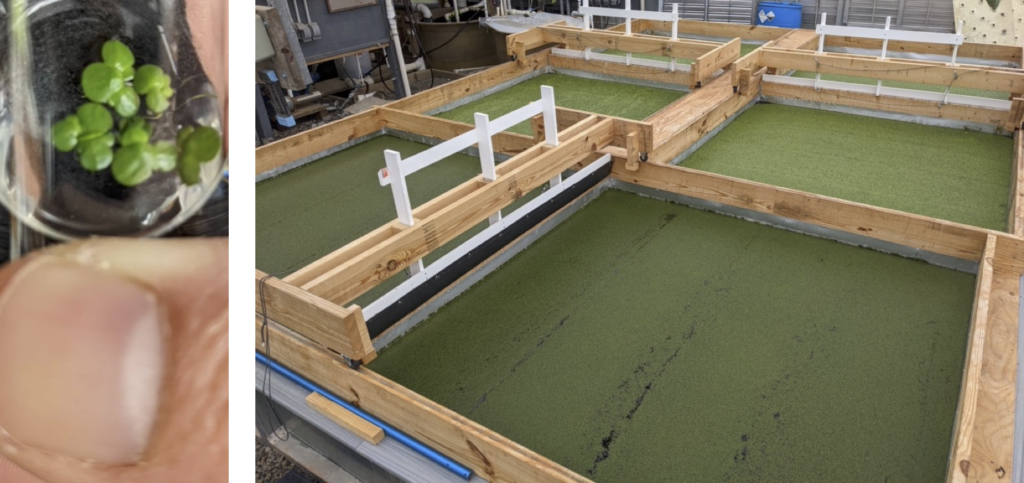
However, L. gibba is a wild species and no efforts have been made to domesticate this plant. Domestication through selective breeding has been carried out on every plant and animal that plays any significant role in our society today. Through many rounds of selection, species are adapted to flourish in an agricultural setting and also modified to produce beneficial products for human use. The LIFT lab has begun this process for L. gibba.
We have two initial breeding goals:
- Improve heat tolerance in L.gibba. Currently, the major constraint on yield in a typical growing season is growth at high temperatures. The wild varieties grow optimally in spring and fall but dramatically decrease growth rates in the middle of summer. We are currently selecting for varieties that maintain high growth rates throughout the warmer months.
- Increased starch/protein ratio. Wild varieties accumulate high amounts of protein in optimal conditions. We are interested in developing varieties that can work as a low-carbon, high-yielding feedstock for industrial fermentation. Therefore we are working to increase the starch content of the plants. This will likely be inadvertently coupled with decreased protein production.
We are currently setting up the capacity to utilize a combination of high-throughput phenotyping with genomic assist breeding methods. L.gibba has the ability to go through a sexual reproductive cycle in 5-6 weeks. Therefore selective breeding can be done very fast. We anticipate having improved varieties in as little as 5 years.
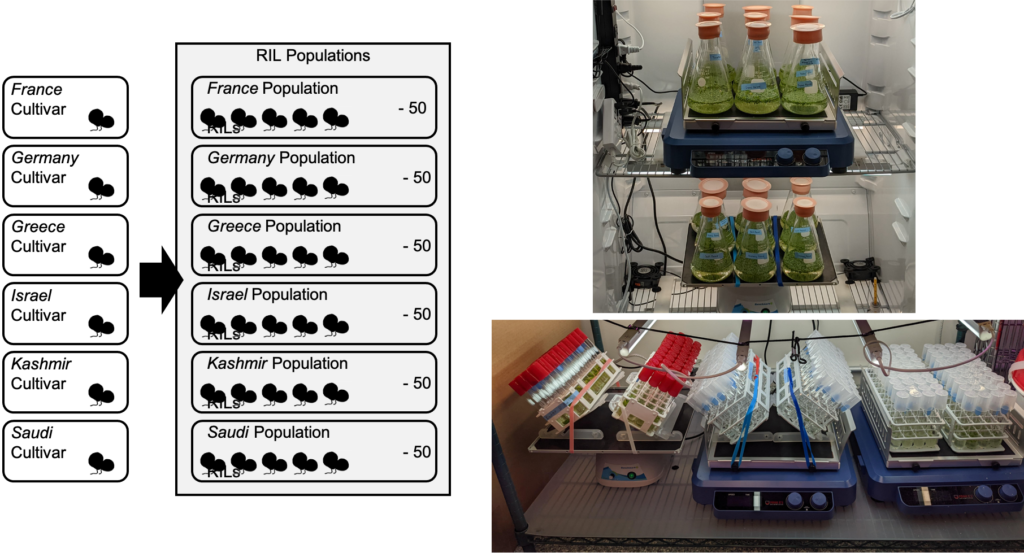
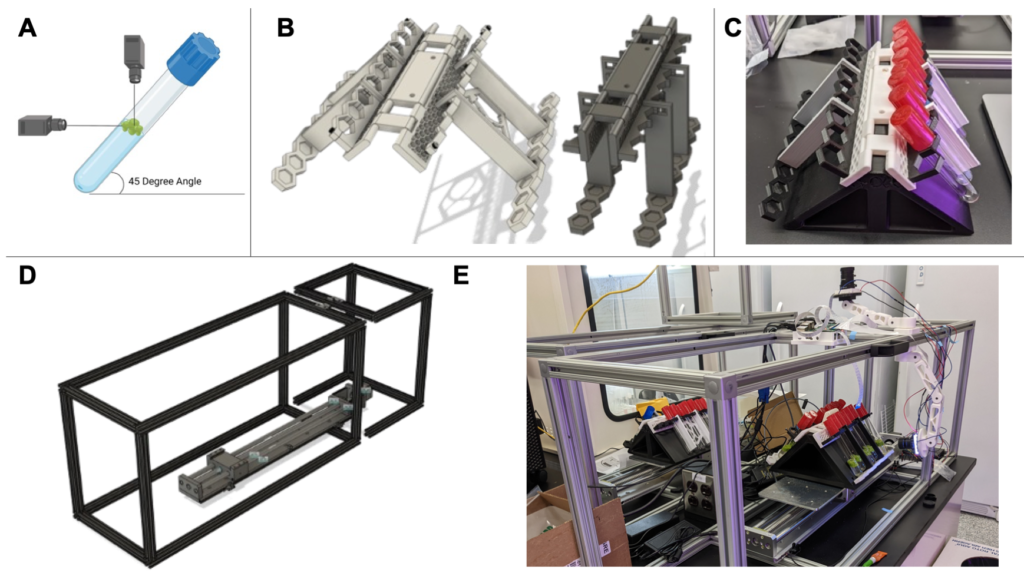
Lemna Potential
L. gibba can be grown on many different organic waste streams. This has the potential to dramatically reduce the carbon footprint by eliminating industrial fertilizer use. It also requires no pesticides or herbicides. Based on observed growth rates, it has the potential to yield several-fold more usable biomass per acre compared to any existing crop.
Lemnaceae biomass can be used for human food, animal feed and bioenergy. However, the LIFT lab is particularly interested in the idea of using L. gibba as a feedstock for novel bioproducts.
Bioproduction and The Circular Bioeconomy
Our modern society utilizes several large-scale systems that operate in an unsustainable linear fashion. Two examples are the use of chemical fertilizers in our food systems and the use of fossil fuels to provide energy to our world. In both systems, a finite resource is extracted from the earth, used once and then discarded as waste in the form of air or water pollution.
In the case of chemical fertilizers, large amounts of energy are expended to mine Phosphorus and Potassium while nitrogen is fixed from the atmosphere. They are used as fertilizer and then ultimately discharged into the environment where they contribute to nutrient pollution that is now pervasive in all major freshwater and marine environments.
In the case of fossil fuels, coal, natural gas and oil are extracted. Most of this (~92%) is combusted for energy and the resulting greenhouse gas (GHG) is emitted into the atmosphere as the main driver of climate change.
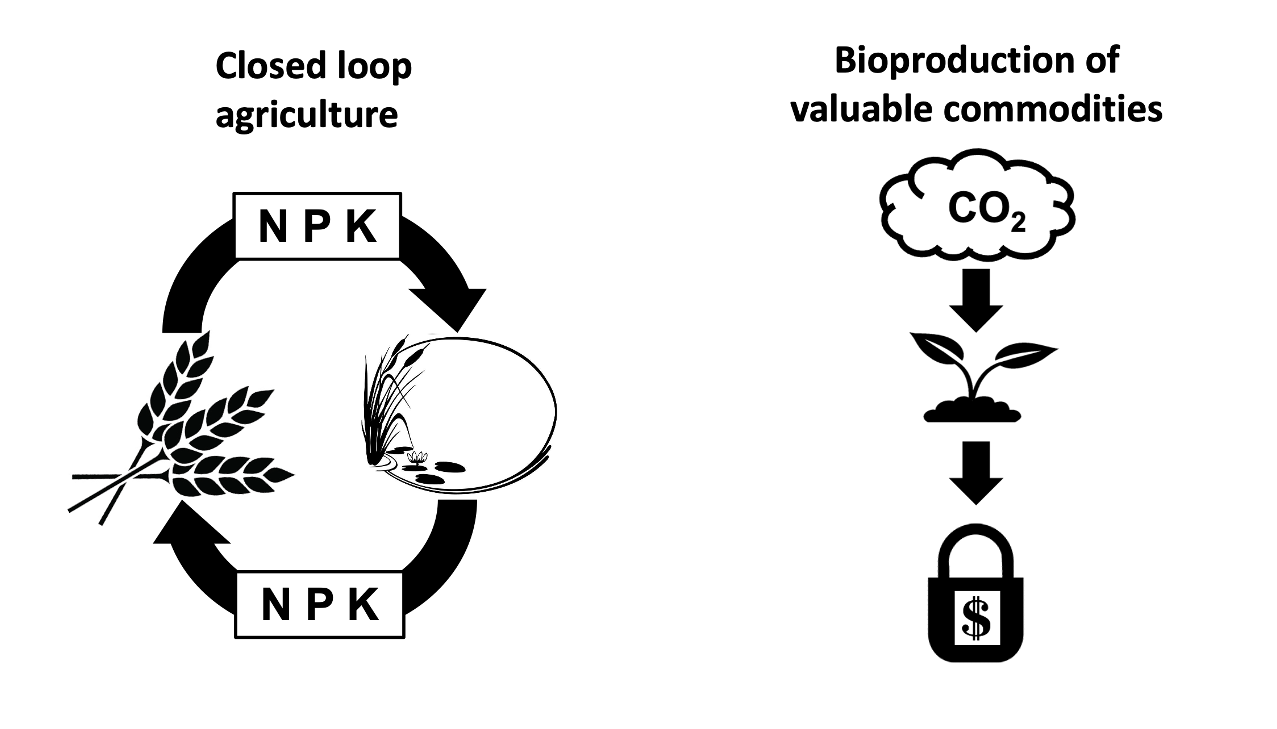
This linear model of extraction, use and waste is, by definition, unsustainable. Sustainability can be achieved through circularization of these systems. Crop agriculture will play a large role in future circular systems but we will require a new generation of crops to achieve this. L. gibba has the ability to produce massive amounts of high-quality biomass without the use of chemical fertilizers. All plants grow by capturing and sequestering CO2 from the atmosphere. In most cases the bulk of this carbon is re-released when the biomass is degraded. However, if this plant biomass is converted to long-lived bioproduct, we have the potential to sequester this carbon longer and create a product with decreased carbon footprint compared to one that did not use plant biomass as a starting material. In most cases, the plant-based product would be replacing a product that is traditionally made using fossil resources (petroleum or natural gas) as the feedstock material. Around 8% of all fossil fuels are not actually combusted for fuel but instead converted to many products we rely on every day such as plastics, paints and clothes. Bioproducts, as part of the bio-based economy have the potential to significantly decrease the carbon footprint associated with these products and also create new more environmentally friendly versions of these products.
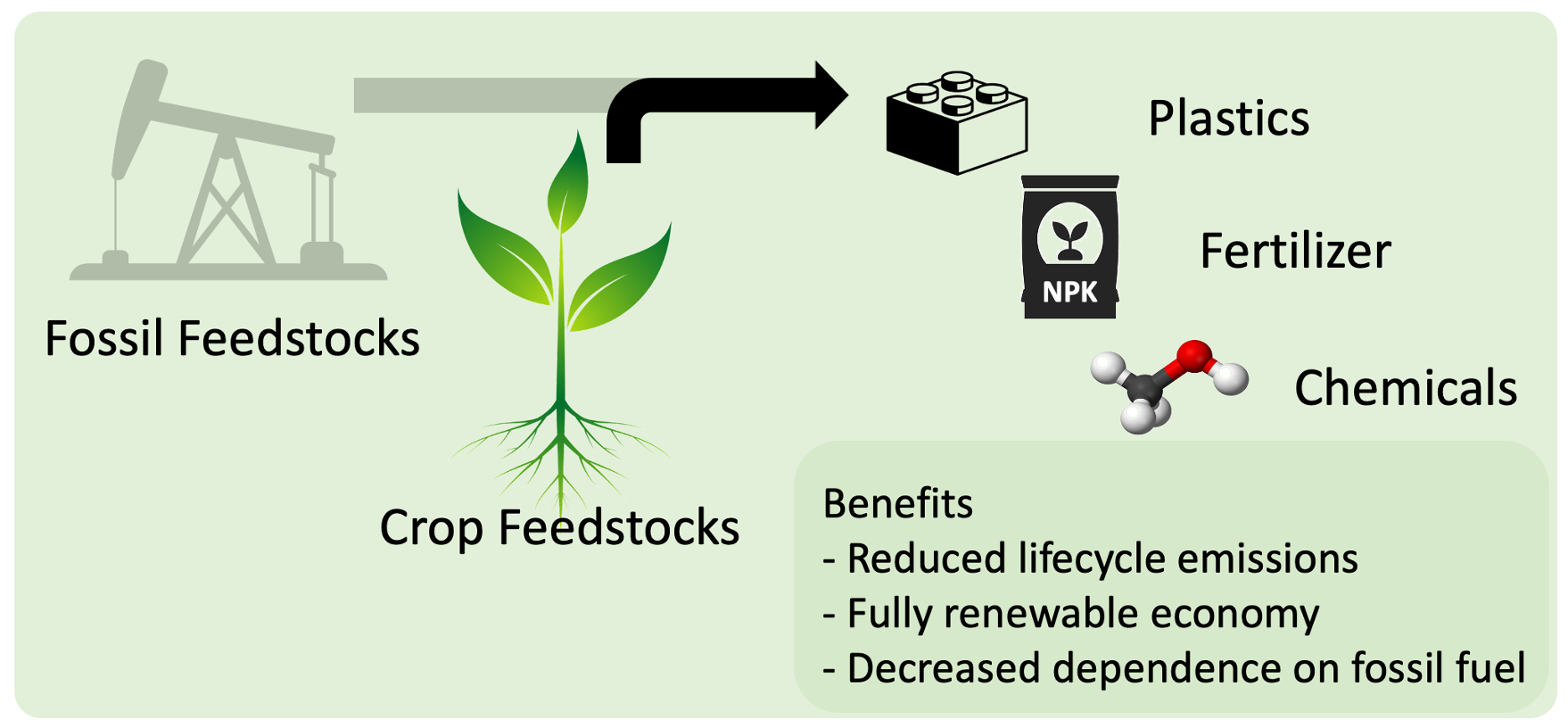
Currently bioproducts are produced almost exclusively through the process of industrial fermentation. In this process, a feedstock crop (usually corn grain) is used to feed microbes and the microbes are engineered to produce a molecule of interest. However, as an example, Assume the U.S. wanted to replace the 8% of non-combusted fossil fuel used to make fossil-based products with plant-based bioproducts. This would require the U.S. to double corn production by adding an additional 82 million acres of cropland. That area is approximately the total areas of Virginia, North Carolina and South Carolina combined. This amount of additional crop production is impossible with our current crop species. This is why we are interested in developing alternatives.
